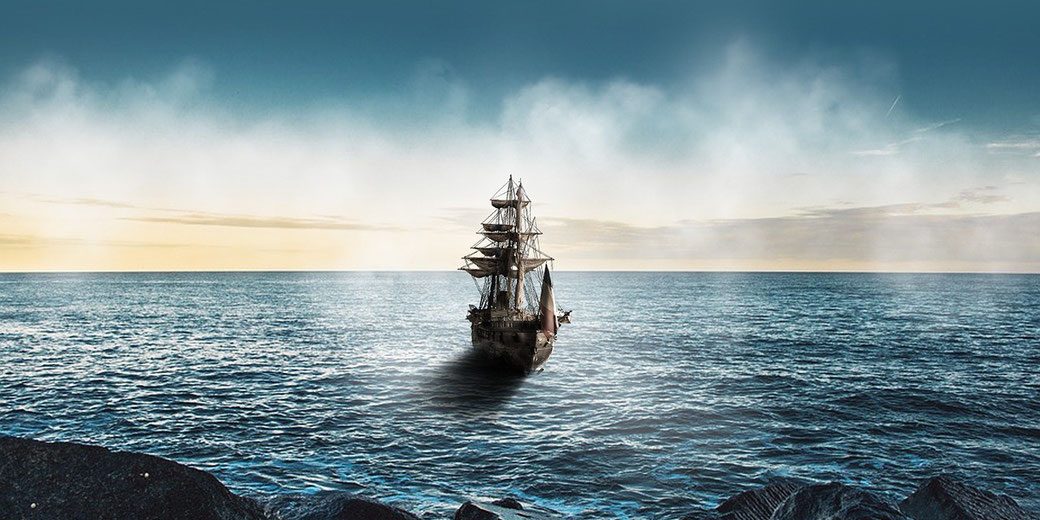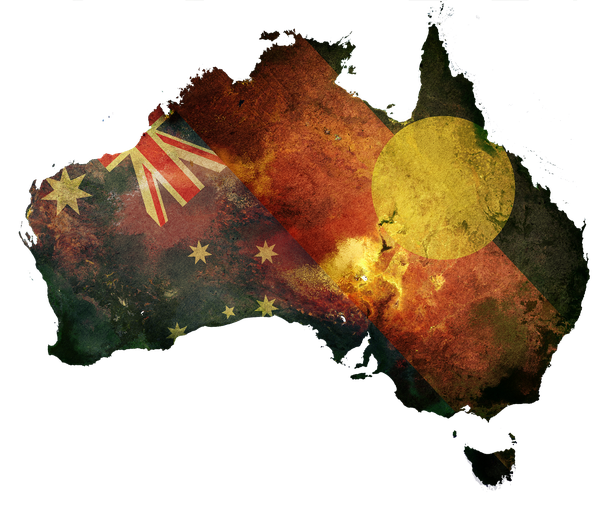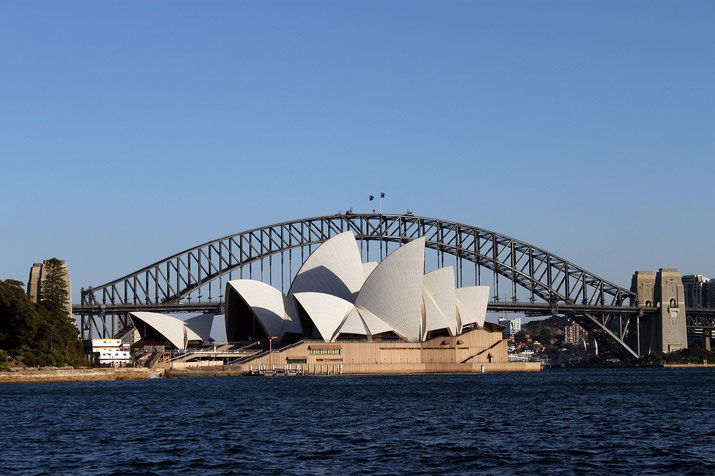Arthur Phillip's role in founding Sydney

In 1787, the British sent a fleet of ships to establish a penal colony at Botany Bay, Australia. The British government wanted to establish this colony to alleviate overcrowding in British prisons, especially after the loss of the American colonies as a penal destination.
Captain Arthur Phillip was the appointed leader of the expedition, and he made several decisions that had enduring effects on the Indigenous Peoples of Australia.
The arrival of the British
The First Fleet departed from Portsmouth, England, on May 13, 1787, and traveled over 24,000 kilometers before arriving at Botany Bay in Australia on January 18, 1788.
This fleet was composed of 11 ships including the flagship HMS Sirius, the armed tender HMS Supply, and nine other vessels such as the Alexander, Charlotte, and Scarborough.
These vessels transported more than 1,400 individuals, among whom were 778 convicts.
While the majority of these convicts were men, there were approximately 200 women and children.
Upon arriving, the British encountered the Eora people, who had inhabited the area for thousands of years and initially observed the newcomers with caution.
However, after just a few days at Botany Bay, Arthur Phillip decided that the location was unsuitable for a colony, since it lack fresh water and suitable soil for agriculture.
As a result, he began to search for an alternative site. He decided to move the colony to Sydney Cove, which is where the present-day city of Sydney is located.
They arrived on 26 January 1788, which is now commemorated as Australia Day.

Arthur Phillip's leadership
Captain Arthur Phillip was appointed as governor to lead the new colony. An experienced sailor, he had participated in the Seven Years' War and was a firm believer in the fair treatment of individuals.
This principle would become significant in his interactions with the Indigenous Australians.
Upon his arrival in Sydney, Captain Phillip promptly began to establish clear rules for the new colony, and theft or violence would not be tolerated.
As the governor, he was responsible for the well-being of all colonists, whether free or convict.
The British government's aspiration for the new colony to be self-sufficient was not realized.
The first few years of the colony were extremely difficult. There was a shortage of food which led to starvation and sickness for many of the convicts.
The poor soil of Sydney Cove left the colonists dependent on the local First Nations peoples' generosity for food and additional resources.
As a result, colonists learnt how to supplement their diets with local plants and animals, including kangaroos and fish, despite many colonists’ unfamiliarity with such resources.
In a letter he wrote to Lord Sydney in 1788, Phillip said that the colony was "in a most distressed state" but that he was willing to remain in charge as long as was required.
In March 1788, Phillip established a secondary settlement on Norfolk Island to increase food production, sending a group of convicts and marines to create a self-sustaining agricultural outpost.
Nevertheless, by 1789, the situation had deteriorated to such an extent that Captain Phillip contemplated abandoning the colony and returning to England. Ultimately, he resolved to remain and endeavor to ensure the colony's success.
One decision made by Arthur Phillip was to allow convicts to own land. This was a controversial choice as that was not allowed in other British colonies.
In fact, Phillip allowed well-behaved convicts to earn conditional pardons, enabling them to work for wages and, in some cases, to receive small land grants upon completing their sentences.
He believed that it would help to encourage the convicts to make a successful colony.
This decision, however, resulted in the displacement of many First Nations peoples who had already been living in the area.
Convicts were used to build houses and roads, as well as in agricultural work. Additionally, they served as a source of inexpensive labor for various businesses.
This led to the development of a class system in which the free settlers were at the top, followed by the convicts, and then the Indigenous People of Australia.
Interactions with the First Nations Peoples
Phillip is regarded as an enlightened leader due to his timely acknowledgment of the significance of peaceful coexistence with Indigenous Peoples.
Deciding how to interact with the First Nations people residing in Sydney was among Arthur Phillip's most critical decisions.
Around 1500 Indigenous people spread across around 30 different groups were living in the area.
They had their own language and culture and were completely unfamiliar with the British.
In fact, Philip had received instructions from the British government to respect the land rights of Indigenous Australians.
Captain Phillip's first encounter with the local Aboriginal people took place on 29 January 1788, just two days after the colonists had arrived in Sydney Cove.
This meeting was recorded by one of Phillip's officers, Watkin Tench:
"A party of men, women and children were collected on the rocks near the cove; they seemed very timid, and we could not prevail upon them to come down. Mr. White [one of Phillip's officers] went up to them with a flag in his hand, and made signs of friendship, but they only answered by looking at him without appearing to understand what he said. Two men then advanced from the rest, and came within fifty yards of the party; these we supposed to be chiefs. They were both armed with spears, clubs and shields, and had their bodies painted with a sort of red ochre, which had the appearance of being mixed with grease. They made many gestures, but we could not understand them."
The First Nations peoples were understandably wary of these strange, new people who had arrived in their land.
However, Phillip was keen to establish friendly relations and so he sent out parties of men to explore the area and try to learn more about the local people.
The British marine officers, including Major Robert Ross, were tasked with enforcing order in the colony, often clashing with Phillip over his relatively humane treatment of convicts.
Regardless, Phillip made arrangements for some First Nations individuals to be brought to Sydney Cove for closer observation.
Captain Phillip determined that making peace was the best approach and tried to emphasize his desire for peaceful coexistence, rather than conflict.
To try to achieve this, he established a policy of mutual respect, which meant that the British would not interfere in their way of life and the Indigenous Australians would not interfere with the British.
Nevertheless, tensions between settlers and Indigenous people occasionally escalated into violence, with clashes over land, resources, and the colonists' disregard for Indigenous customs and boundaries.
Bennelong
One of Phillip's main goals was to find a way to communicate with the First Nations people.
He eventually succeeded in doing this with the help of a young man named Bennelong.
Bennelong had been captured on Phillip's orders as part of an attempt to learn more about the local Indigenous people and their language.
His capture was part of a strategy for obtaining interpreters and building a line of communication. But Bennelong managed to escape and return back to his home.
However, he soon became curious about these strange new people and so he chose to go back to Sydney Cove on his own.
Bennelong learned English and was eventually given a job as an interpreter. He helped to establish friendly relations between the British colonists and the local First Nations people.
He also acted as a go-between, helping to negotiate trade deals between the two groups.
Bennelong became a close friend of Captain Phillip and was even given the honor of eating dinner with him on several occasions.
However, Bennelong's life was fraught with challenges. He frequently found himself caught in the crossfire of conflicts between the British settlers and the Indigenous peoples.
In 1792, following a land dispute, he was captured by members of his own tribe.
He was eventually released but he decided to stay in Sydney Cove for fear of being killed if he returned home.
Later that year, Bennelong sailed to England with Arthur Phillip and another First Nations man called Yemmerrawanne.
However, Yemmerrawanne fell ill and died in England in 1794. By this stage, Bennelong had become homesick and returned to Australia in 1795.
He eventually settled on the land that is now known as Bennelong Point, where he built a hut and grew crops.
He continued to act as an intermediary between the British and the First Nations people and was even given his own land by Governor Lachlan Macquarie.
Bennelong is remembered as one of the most important figures in the early history of Australia and he played a crucial role in trying to establish friendly relations between the British colonists and the Indigenous People.
Bennelong Point is now the site of the iconic Sydney Opera House.
The legacy of Arthur Phillip
After sustaining an injury from a spear thrown by an Indigenous man in 1790, Governor Phillip returned to England in 1792, leaving behind a fledgling colony.
Arthur Phillip's decisions about the First Nations people have had a significant impact on the shape of Australia.
While his policy of peaceful co-existence was initially successful, it eventually broke down due to misunderstandings and mistrust on both sides.
The Indigenous Peoples were concerned about losing their land and culture, while the British were concerned about the safety of their colony.
This led to conflict and, eventually, the displacement and destruction of many First Nations groups.
The British also introduced a number of new animals to Australia, including sheep and cattle.
These animals quickly spread across the country, and had a significant impact on the First Nations people, who lost access to many of their traditional hunting grounds.
Despite these negative impacts, Arthur Phillip is still remembered as an important figure in Australia's history who laid the foundations for the city of Sydney that exists today.

Further reading
What do you need help with?
Download ready-to-use digital learning resources
Copyright © History Skills 2014-2025.
Contact via email
With the exception of links to external sites, some historical sources and extracts from specific publications, all content on this website is copyrighted by History Skills. This content may not be copied, republished or redistributed without written permission from the website creator. Please use the Contact page to obtain relevant permission.





